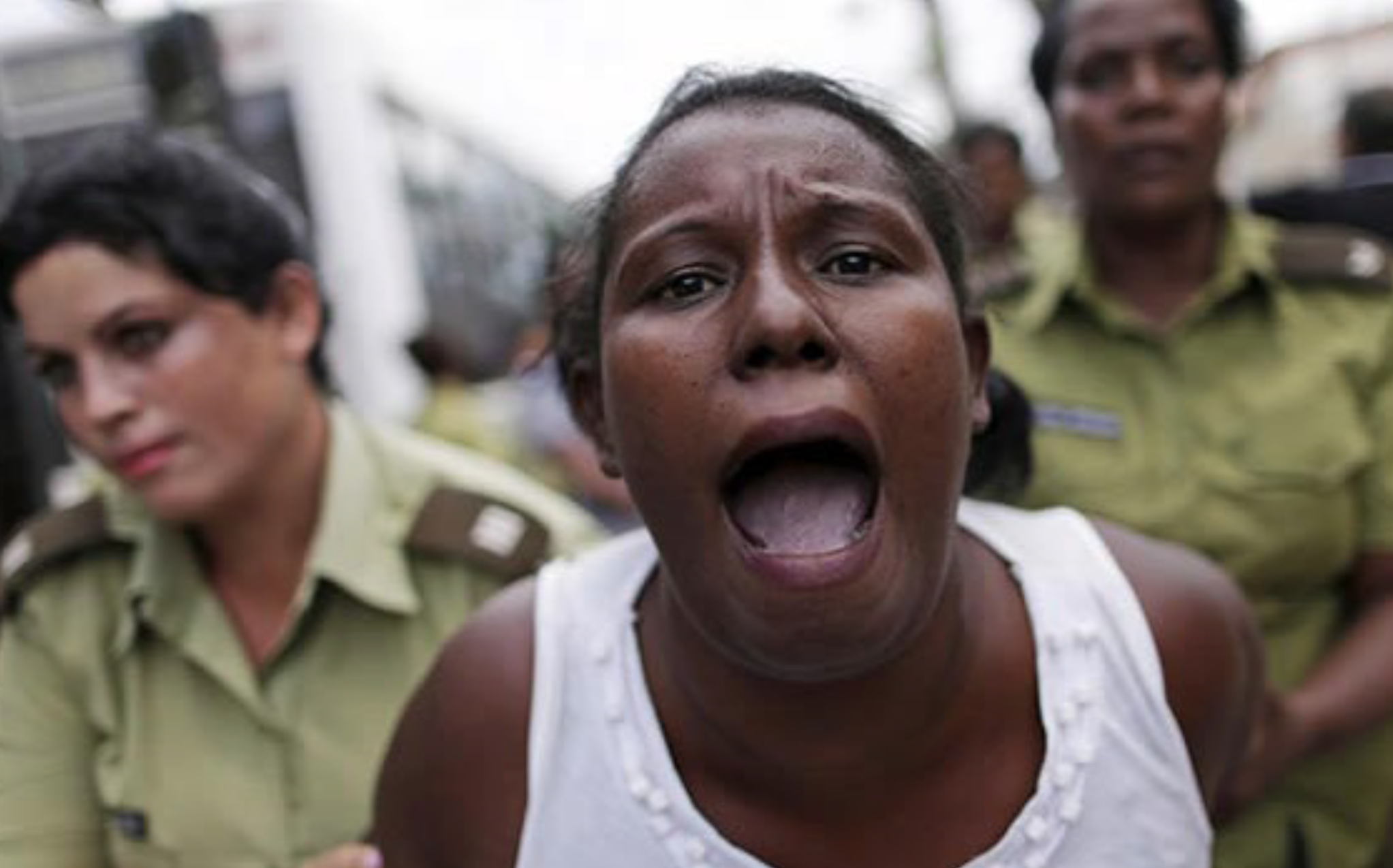Recently, ten Cuban women political prisoners, imprisoned during the July 2021 demonstrations in Cuba, signed with their blood a letter addressed to the president of the republic, Miguel Díaz Canel-Bermúdez. In the document, they demand the supreme pontiff’s will to obtain freedom for the July 2021 demonstrators (expressed through Cardinal Beniamino Stella during a visit he made to the island between January 23 and February 10) be respected.
The publication of this text and its repercussion in the Cuban digital realm led these women to a disciplinary trial inside the prison, a process that, if repeated, could aggravate sanctions that already include up to 14 years of imprisonment, as is the case of one of the signatories, Lizandra Góngora, mother of five minors. In addition, at the Mujeres de Occidente (Women of the West) penitentiary, where they wrote and signed their cry for help and freedom, using paper and writing letters has been forbidden to all the inmates of the prison. This is used by the prison authorities to pit the inmates against each other by targeting the protesters as “responsible” for the widespread punishment.
This fact summarizes the experience of prison for Cuban women, who not only endure subhuman conditions of insalubrity, overcrowding, hunger, neglect, physical abuse, and disrespect for their rights (as well as the rest of the prisoners in Latin America) but are also victims of severe punishments for claiming those rights.
Violence against women in politics is not an isolated event in Cuba. It cannot even be said that it is (only) a practice widely tolerated by the state (as shown by the monitoring of feminist initiatives such as the Gender Observatory of Alas Tensas and Yo Sí Te Creo), since it is precisely the Cuban state the main perpetrator of violence against women.
Every Sunday, at least a dozen women members of the Ladies in White are prevented from attending mass or any space for political protest or socialization. Besides, they are detained for hours in police units or forced to pay fines of up to an average Cuban salary. They have been joined (in churches and cells) by the women who are part of the recently created Cuba de Luto movement, who, dressed in black, try to demand in public the freedom of their loved ones, mostly detained as a result of 11 July (11J).
Also, recently, some women have been arrested whose protests in public spaces sought the closure of stores in freely convertible currencies (MLC) in which the state does not pay its workers. Let’s remember that these stores are limited to a small privileged part of the population with access to foreign currencies.
Independent human rights organizations, which have had the help of different members of civil society, have been able to count that, after the social outburst of July 2021 and due to public protests, at least 284 women have been put behind bars in Cuba: 223 in relation to the 11J and 61 for public protests (or in direct or indirect relation to the demonstrations of the last two years).
However, before these protests, at least four women were deprived of freedom for political reasons. One of them, Aymara Nieto, was held for two years in a prison more than 600 kilometers away from her husband and two daughters. She was imprisoned because she belongs to the opposition group Ladies in White (since 2003, this group has been peacefully demanding in the streets the freedom of their husbands, sons, and fathers, who are also political prisoners of the Cuban regime) and to the opposition group Patriotic Union of Cuba (Unpacu).
There are currently 69 women detained for public protests. The most recent case of deprivation of freedom of a woman occurred last January 10, when the repressive apparatus of State Security took a young 21-year-old influencer from her home and arbitrarily left her, so far and without precautionary measure, at the State Security headquarters in Havana. The young woman has been subjected to interrogations as a form of torture. Her name is Sulmira Martínez Pérez, she calls herself Salem and is being investigated for posting on her Facebook accounts her intention to take to the streets.
In a context in which the women of the world rethink how to continue the struggle for the vindication of our own rights and for those who resist in more marked conditions of vulnerability; Cuban women who confront Cuban totalitarianism ask themselves when to ask for accountability to a state that does nothing more than ratify its control. Some of us are imprisoned in the worst conditions; others are deprived of internet services or prevented from even leaving our homes; others are prevented from returning to the country and others are forced to leave it.
Therefore, we appeal to international solidarity, and we ask Latin American women’s groups, mothers and human rights activists, democratic governments, non-governmental organizations, regional/international intergovernmental forums, and alliances to also raise their voices for the women of Cuba, but, above all, for the political prisoners, now also deprived of using paper.
Cuban women who, in Cuba and outside the country, demand human rights, civil, and political rights, and freedoms of all kinds, as well as the end of the absolute governance of the Communist Party of Cuba, need to call attention to the lack of public and multilateral condemnation of massive, prolonged and permanent imprisonment of women who take to the streets in search of bread and freedom.
*Translated from Spanish by Janaína Ruviaro da Silva











